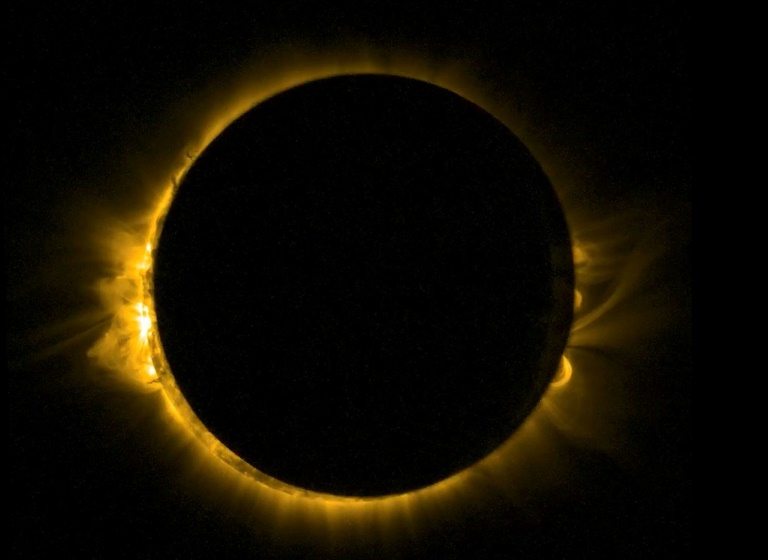On Thursday, a significant European mission embarked from India, focused on exploring the Sun’s enigmatic atmosphere through an innovative technique that simulates a solar eclipse using two highly precise satellites. The launch, conducted by the European Space Agency (ESA), took place at around 4:04 PM IST (1034 GMT) via the PSLV-C59 rocket from the Sriharikota launchpad. The successful separation of the rocket’s third stage elicited applause from mission control, marking a proud moment for both the ESA and the Indian Space Research Organisation (ISRO), who celebrated the rocket’s ascent into the skies. This mission is strategically designed to enhance our understanding of the Sun’s corona, a region that remains elusive under normal circumstances and can only be observed during a total solar eclipse when the Moon obscures the Sun’s blinding light.
The Proba-3 mission is centered on providing researchers with unprecedented access to the Sun’s corona, which is the outermost layer of the Sun’s atmosphere. Unlike other regions of the Sun visible from Earth, the corona can only be observed in its full glory during total solar eclipses. These events are rare, occurring approximately 60 times a century, and typically last for just a few minutes. In contrast, the Proba-3 mission aims to achieve a groundbreaking observation window of 10 to 12 hours each week over a span of two years. This ambitious goal will be facilitated by the dual-satellite setup, crafted to unfold in Earth’s orbit and operate in unison as they follow an elliptical trajectory, moving as far as 60,000 kilometers (37,000 miles) from Earth.
The components of the mission consist of a total weight of half a ton, with both satellites set to separate early next year after entering Earth’s orbit. Positioned approximately 150 meters apart, the satellites will coordinate their movements with millimeter-level precision, which is essential for the performance of their scientific missions. One of the satellites is equipped with a 1.4-meter shield designed to emulate the Moon’s role during a solar eclipse. This shield will block sunlight from reaching its counterpart satellite, which will observe and collect data from the shadows cast by this obstruction. The capability of obtaining long-term observations of the solar corona through this formation flight is unprecedented and showcases the advancements made in satellite technology and engineering.
To execute this complex maneuver, ESA’s Proba-3 project manager, Damien Galano, outlined the critical level of accuracy required for the mission’s success. The satellites will operate autonomously and without real-time ground support as they enter into their 19-hour elliptical orbit. This remarkable feat demands an unprecedented precision in their relative positioning, emphasizing the mission’s ambition to achieve flight control within a millimeter range. Such precision not only underscores the technical capabilities of the satellites but also broadens the scope of potential solar studies that can be undertaken, providing vital data about solar activities and their impacts on space weather, which can affect satellite operations and communication on Earth.
The journey towards the Proba-3 mission was initially slated for launch on Wednesday. However, a minor technical issue led to a postponement of one day, demonstrating the meticulous nature of aerospace operations and the emphasis on ensuring all systems function seamlessly before a launch. The reliable performance of the PSLV-C59 rocket, developed by the ISRO, is a testament to India’s growing competence in space missions, particularly in tandem with international space exploration efforts. The collaboration highlights a growing partnership between European and Indian space agencies, as they work together to push the boundaries of solar research and develop technologies that may inspire future missions.
In conclusion, the success of the Proba-3 mission is anticipated to significantly enhance our comprehension of the Sun’s corona, contributing to a broader understanding of solar phenomena. The innovative approach of simulating a solar eclipse with precision satellites reflects advancements in both engineering and scientific research. This mission not only holds implications for solar science but also fosters an international spirit of collaboration in space exploration, paving the way for future endeavors. With the ESA and ISRO working alongside each other, the Proba-3 mission exemplifies how shared technological advancements and resources can lead to groundbreaking discoveries while simultaneously enriching our global scientific community.

